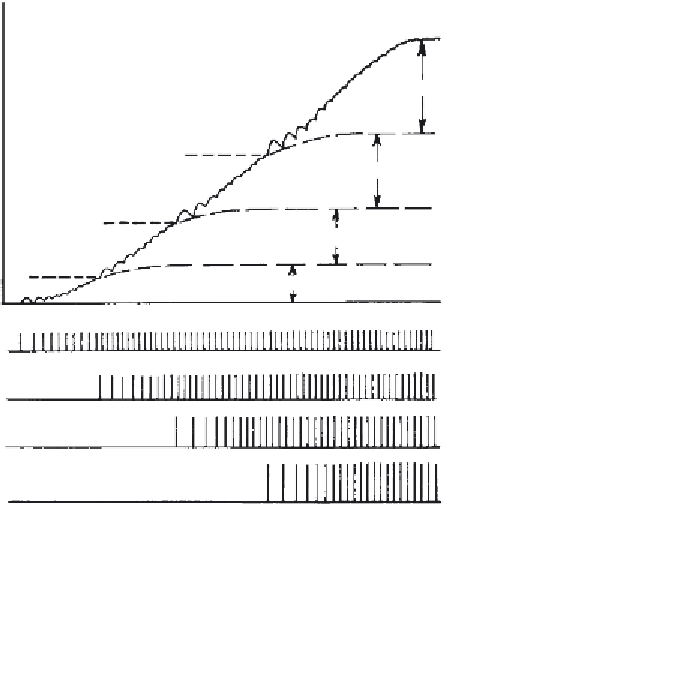Biomedical Engineering Reference
In-Depth Information
Are they always recruited in the same order? It is now generally accepted that
they are recruited according to the
size principle
(Henneman, 1974
a
), which
states that the size of the newly recruited motor unit increases with the tension
level at which it is recruited. This means that the smallest unit is recruited
first and the largest unit last. In this manner, low-tension movements can be
achieved in finely graded steps. Conversely, those movements requiring high
forces but not needing fine control are accomplished by recruiting the larger
motor units. Figure 9.3 depicts a hypothetical tension curve resulting from
successive recruitment of several motor units. The smallest motor unit (MU 1)
is recruited first, usually at an initial frequency ranging from about 5 to 13 Hz.
Tension increases as MU 1 fires more rapidly, until a certain tension is reached
at which MU 2 is recruited. Here, MU 2 starts firing at its initial low rate and
further tension is achieved by the increased firing of both MU 1 and 2. At
a certain tension, MU 1 will reach its maximum firing rate (15 - 60 Hz) and
will, therefore, be generating its maximum tension. This process of increasing
tension, reaching new thresholds, and recruiting another larger motor unit
continues until maximum voluntary contraction is reached (not shown in
Figure 9.3). At that point, all motor units will be firing at their maximum
frequencies. Tension is reduced by the reverse process: successive reduction
Max.
Tension M.U.4
Threshold
M.U.4
Max. Tension M.U.3
Threshold
M.U.3
Max. Tension M.U.2
Threshold
M.U.2
Max. Tension M.U.1
T
M.U.1
M.U.2
M.U.3
M.U.4
Figure 9.3
Size principle of recruitment of motor units. Smaller motor units are
recruited first; successively larger units begin firing at increasing tension levels. In all
cases, the newly recruited unit fires at a base frequency, then increases to a maximum.










Search WWH ::

Custom Search